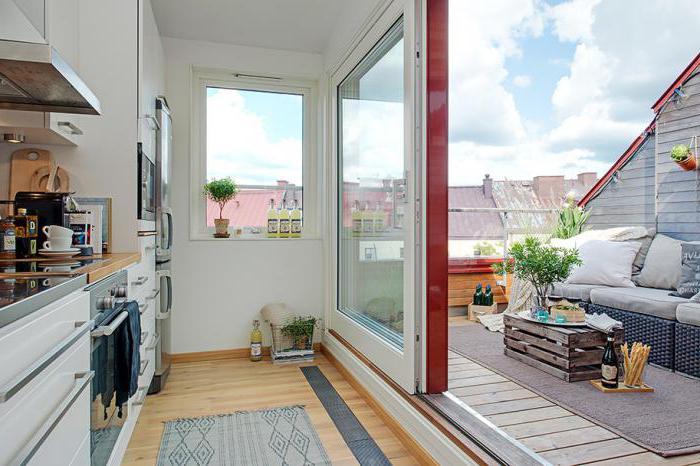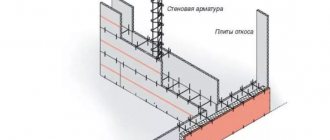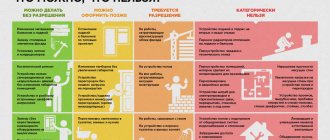Citizens often wonder about the inclusion of balconies in the total area of the apartments they purchase. There are contradictions in the legislation regarding this point. Controversial issues are associated with different statements of standards in the Housing Code and SNiPs. At the same time, the issue of calculating living space is important when the buyer needs to register an apartment. The final cost depends on the correct calculation of the living space. Also, how much a citizen will ultimately pay for utilities depends on the footage.
What does the square footage of an apartment affect?
When purchasing a home, it is important to accurately calculate its square footage. This value affects such indicators as:
- final price of housing;
- amount of heating payments;
- the amount of land tax;
- calculation of the amount of housing tax;
- determining the amount of tax deduction;
- calculation of 1 m2 of housing during the procedure for relocating residents from a dilapidated building;
- determination of housing accounting standards;
- calculation of living space transferred under a social tenancy agreement;
- calculation of the amount of gratuitous social payments from the state budget.
Footage is also necessary when drawing up deeds of transfer, drawing up inspection reports for living spaces, drawing up an assessment report, and allocating rooms in dormitories. This indicator is required when drawing up a registration certificate for housing and during the redevelopment procedure. This parameter is always necessary when selling real estate.
SNiP standards for balconies
The provisions regarding the calculation of living space are regulated by SNiP dated 2003. There are also separate rules in the technical regulations adopted under the Law of December 30, 2009, designated 384-FZ. This law is considered a priority.
View this post on Instagram
Glazing Loggia Siding, PVC structure 24 single-chamber double-glazed windows, internal insulation with polystyrene foam (extruded) 30mm, flooring, finishing with laminated PVC panels. Pavlovsky district, village. Prudskoe Website: https://ellips22.ru ☎8(929)397-3024 ⏰from 9-00 to 21-00 #balconies #balconiesnovoaltaisk #balconiesrepair #loggiabarnaul #balconybarnaul #balconydiscount #balcony-siding finishing #newbuildingsbarnaul #repairbarnaul #repairconbarnaul #installment plan barnaul # repaircon #blindsorder #blinds #blindsbarnaul #blindszebra #blindsisotra #partitions #partitionsbarnaul
A post shared by GLAZING BALCONIES AND LOGGIAS (@balkony22) on Apr 8, 2020 at 6:43am PDT
Some points regarding the calculation of living space sizes are contained in the Instructions adopted by order of the Ministry of Land Construction, number 37, dated August 4, 1998.
How is a balcony calculated in the total area of an apartment according to SNiP
SNiP does not contain precise instructions regarding whether a balcony is included in the total area of the apartment. In clause B.2.2 of the Appendix to SNiP 2003 there is a definition of the total area of the dwelling. It includes heated and unheated rooms. The latter includes the balcony area along with loggias. In this case, the footage of unheated zones is calculated with a reduction factor.
In paragraph 3.37 of the Instruction, number 37, it is stated that the total area of housing includes the footage of its premises, as well as balcony space and loggias. Verandas, storage rooms and terraces are also taken into account. The size of these premises is calculated using a reduction factor.
The 2nd Appendix to SNiP under number 2.08.01-89 also states that the total living space includes not only the area of the premises, but also balcony areas and loggias. The latter are also taken into account according to approved reduction factors.
Important! Building regulations regulate that balcony areas and loggias are included in the total living space.
Does the balcony belong to the residential part of the apartment?
SNiP distinguishes between the total living space of apartments and their living area. All SNiPs indicate that the housing area includes only premises where heating is installed, as well as the footage of all residential and auxiliary areas, but without balcony areas and loggias. The latter are classified as unheated areas of apartments. Also, Instruction number 37 does not include unheated premises as a residential area.
Attention! Current SNiPs in Russia do not classify balcony areas and loggias as living space. It includes only rooms.
Is the area of a loggia or balcony taken into account when calculating fees for the maintenance and repair of premises?
Services from public utilities are provided according to the relevant rules that are approved by current legislation. Heating services calculate fees according to the square footage of the apartment, without taking into account the square footage of balconies and loggias. According to the rules of Art. No. 354 of the Housing Code of the Russian Federation, contracts with public utilities must contain the following information:
- address;
- area of premises heated by central heating;
- number of registered residents.
In other words, according to the contract, only heated rooms are taken, respectively, a balcony and a loggia do not apply to them if there have been no redevelopments.
The amount of payment for major repairs is determined by the total area - Art. 156 Housing Code of the Russian Federation. Therefore, the footage of the balcony does not count.

It is customary for housing and communal services to calculate the rent based on the square footage of the premises. Housing laws directly state that balconies and loggias are not included in the total area of apartments. But often property owners have many complaints against management organizations when parts of the housing not taken into account by law suddenly became part of a single footage, but they did not need to be included. Accordingly, the amount of payment for the apartment increases.

But, as a rule, the operating organizations are not to blame. After all, rent is calculated on the basis of documentation provided by the owners. It is from the cadastral passport that the housing office takes the number of square meters and multiplies it by the tariff to calculate payment. This document is issued after signing the acceptance certificate with the construction organization.
Buyers of apartments are required to take a responsible approach to accepting papers during the transaction. You need to check them carefully, especially the parameters of the object of sale indicated in them. It is important that the act takes into account the area without balconies with loggias.
Only with the correct document should you visit the real estate registration service and register your right to the property. After this, the owners receive cadastral passports with the correctly calculated dimensions of the apartment.
There are cases when construction organizations insist on signing an act where the total area is calculated taking into account the loggia or balcony. Such papers can also be signed. However, before visiting the registration chamber, it is better to immediately go to the Bureau of Technical Inventory (BTI) to obtain the “correct” registration certificate for the apartment.
It is customary for BTI to work with the Housing Code. Based on this, the total footage is calculated, excluding loggias and balconies. After preparing the technical passport, you need to take all the documentation for the apartment (including the acceptance certificate) and apply for registration of the purchased property. Area indicators are written out from BTI information.
Article 15 of the Housing Code of the Russian Federation
This law contains the concept of residential premises. It is understood as an isolated type premises classified as real estate. Moreover, it will be considered residential if people can live in it.
This law also specifies what is included in the total living space. This is stated in Art. 15 of the law, namely, in part 5. According to the Housing Code, the total footage of a residential premises includes the sum of the areas of its parts. It also includes auxiliary premises. The exception is balcony areas, loggias, as well as terraces and verandas.
Note! The residential complex does not include balcony spaces and loggias among the total living space.
Ownership rights to common property of premises owners in an apartment building
Housing Code of the Russian Federation: establishing a list of property owned by the owners of premises in an apartment building on the basis of the right of common shared ownership of premises in this building: not being parts of apartments and intended to serve more than one premises in this building, including inter-apartment landings, stairs, elevators, elevators and other shafts, corridors, technical floors, attics, basements in which there are engineering communications, other equipment serving more than one room in a given house (technical basements), as well as roofs enclosing load-bearing and non-load-bearing structures of a given house, mechanical, electrical, sanitary -technical and other equipment located in this house outside or inside the premises and serving more than one premises, the land plot on which this house is located, with elements of landscaping and landscaping, and other objects intended for the maintenance, operation and improvement of this house, located on the specified land plot (part 1 of Art. 36).
Establishing a provision according to which reducing the size of common property in an apartment building is possible only with the consent of all owners of premises in this building through its reconstruction (Part 3 of Article 36).
Establishing a procedure for determining the share in the right of common ownership of common property in an apartment building of the owner of the premises in this building: in proportion to the size of the total area of the premises belonging to him. This share follows the fate of ownership of the said premises. The allocation of a share in kind and its alienation are not allowed (Article 37).
Comments. With the entry into force of the Housing Code of the Russian Federation, the common property of the owners of premises in an apartment building by force of law includes the land plot on which the house is located.
The Code (Article 36) and the Federal Law of December 29, 2004 N 189-FZ 'On the entry into force of the Housing Code of the Russian Federation' (Article 16) establish the grounds for determining the boundaries and sizes of land plots, as well as the requirements ensuring the acquisition owners of premises have rights of shared ownership of land plots.
Housing complex of the RSFSR: did not regulate the ownership of common property of the owners of premises in an apartment building.
Contradictions between the RF Housing Code and SNiP
There is a discrepancy between the requirements contained in SNiPs and the Housing Code. According to the first, the area of balcony premises is taken into account as part of the total living space, but with the mandatory inclusion of a reduction factor; according to the second, balcony areas do not belong to the general footage of apartments.
SNiPs regulate the relationships that arise between shareholders and builders of apartment buildings (MKD).
Construction companies, when selling apartments, are required to evaluate their footage together with balcony rooms, taking into account the reduction factors provided for them. They will affect the cost of all housing.
Housing complexes regulate only those relationships that arise between home owners and management companies. For this reason, the residential complex does not include balconies with loggias among the general footage of apartments.
Important! The residential complex has the status of a federal law. Its legal force is higher than that of SNiPs. Despite the obvious contradiction of these acts, citizens, developers and management organizations must be guided by the provisions of the Housing Code of the Russian Federation.
Therefore, one should rely on the fact that balcony rooms are not part of the total footage of the home.
Is the balcony included in the total area of the apartment?
Ideas about whether it is necessary to take into account the footage of balconies in the general apartment area differ in different documents. This confusion occurs due to the fact that the development of apartment buildings is regulated by SNiP regulations No. 31-01-2003 and existing building codes. This document states that the calculation of areas occurs in accordance with the rules established by the Instructions on the accounting of residential real estate in the Russian Federation, which was adopted on August 4, 1998 by Order of the Ministry of Land Construction No. 37.







